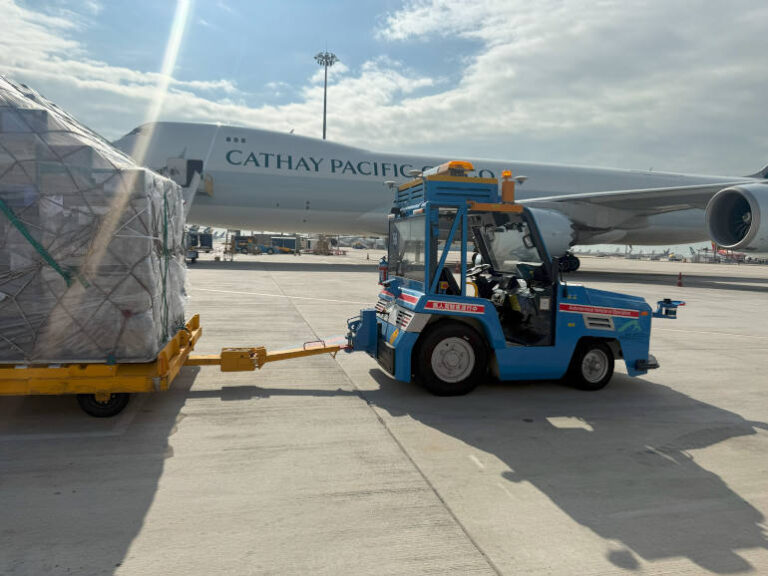Cathay Cargo Terminal has successfully completed a pioneering trial of Autonomous Electric Tractors (AETs) for cargo handling at Hong Kong International Airport (HKIA), marking a global milestone in sustainable and smart logistics.
In a world-first for end-to-end autonomous cargo towing, a fully electric, self-driving tractor transported four cargo dollies from within the terminal directly to the West Cargo Apron – HKIA’s furthest apron zone. The vehicle independently navigated through complex airport environments, docked precisely for loading, and then delivered the cargo to a Cathay Cargo flight without human intervention.
One standout innovation is the precise docking system which allows the AET’s dolly chains to automatically align with the transfer deck. This ensures seamless loading of Unit Load Devices (ULDs) and improves overall cargo flow. Enhanced digital security protocols also allow the AETs to check in and out of terminal zones without compromising safety or compliance.
The initiative is a collaboration between Cathay Cargo Terminal, Airport Authority Hong Kong, and UISEE, a leading autonomous driving firm from China. According to Mark Watts, Chief Operating Officer of Cathay Cargo Terminal, this trial shows how AETs can handle “more advanced workflows than we have seen so far for cargo, reducing manual processes and significantly enhancing operational efficiency.” He added that the system also “significantly reduces carbon emissions associated with traditional ground service equipment.”
In tandem with the autonomous program, the terminal is piloting Hydrotreated Vegetable Oil (HVO) – a renewable diesel alternative – for its non-electric tractors. HVO is estimated to reduce lifecycle emissions by 80–90%, underscoring Cathay’s commitment to green innovation. “HVO is a very important step,” said Watts, “but continued electrification is the ultimate vision to help us reduce carbon emissions and pursue Cathay’s digital and sustainability leadership.”
Wing Yeung, Acting Deputy Director of Airport Operations at HKIA, called the achievement a “new milestone” in the airport’s smart logistics evolution. “The successful deployment of AETs reflects our continuous efforts in adopting smart airport initiatives and reinforcing our position as a global aviation hub,” Yeung said.
Fleet managers worldwide can look to Hong Kong for inspiration, as the integration of autonomous vehicles and low-emission fuels sets a compelling blueprint for the future of airport and cargo logistics.






